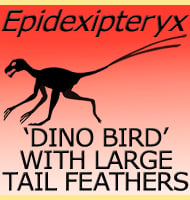Streptospondylus
In Depth Streptospondylus could have become the first dinosaur to be scientifically recognised. Starting in 1770 vertebrae and limb remains were steadily recovered and over the course of the following years many fossils for separate locations were collected before being sent to the Museum National d’Histoire Naturelle in Paris, France in 1800. These fossils were … Read more
